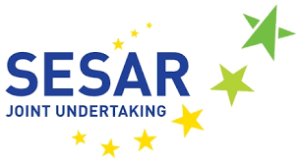 Launched today, TindAIR is a new consortium funded by the European Union ́s Horizon 2020 research and innovation program tasked with working on wide scale demonstrations of urban air mobility applications.
Launched today, TindAIR is a new consortium funded by the European Union ́s Horizon 2020 research and innovation program tasked with working on wide scale demonstrations of urban air mobility applications.
TindAIR, which stands for Tactical INstrumental Deconfliction And in flight Resolution, falls under SESAR’s U-Space efforts, developing unmanned traffic management systems for integration of drones into the airspace. The consortium is among the first dedicated to looking at the integration of passenger drones into the airspace – a step forward for the hot urban air mobility (UAM) sector.
“As the demand for the use of unmanned air vehicles (UAV) in urban settings grows, so does the need to ensure the unlimited, unrestricted and safe cohabitation of all airspace users in our skies. To address this challenge, a group of innovative companies and research laboratories from France, Italy, Spain and the United Kingdom, coordinated by Innov’ATM under the aegis of the SESAR Joint Undertaking, have teamed up to launch TindAIR, a series of very large-scale demonstrations on urban air mobility, with a focus on strategic deconfliction,” says a press release.
TindAIR’s large scale demonstrations of urban air mobility vehicles will help to develop UTM capabilities to handle the traffic, and show that UAM is feasible in an urban/suburban environment.
“…[T]he TindAIR consortium will operate a series of demonstrations covering a range of representative and operational user cases and featuring a combination of manned and unmanned aircraft. Operational scenarios will address existing urban needs or compelling use cases, from medical emergency transport to a mix of freight and passenger flights, including extreme cases like sector saturation capacity and emergency landing. And all this using aircraft of various types and capacities with varying levels of automation, all sharing the same volume of airspace.”
The demonstrations are expected to begin next year, and will take place in the suburban – urban areas of the French cities of Toulouse and Bordeaux.
One of the primary goals of the demonstrations are to explore and validate deconfliction technologies: systems that allow air traffic to both detect potential conflicts or obstacles, and alter course or take another appropriate action. While it sounds simple, in an unmanned environment this type of decision making requires many levels of data and sophisticated algorithms to ensure effective deconfliction. Concepts tested as part of the TindAIR project could be integrated into future U-space deployments.
TindAIR consortium members:
Coordinator: Innov’ATM, France, www.innov-atm.com
ONERA (Office National d’Etudes et de Recherches Aérospatiales), France, www.onera.fr
Pildo Consulting SL, Spain, www.pildo.com
ISSNOVA (Institute for Sustainable Society and Innovation), Italy, www.issnova.eu
Rockwell Collins France SAS, France, www.collinsaerospace.com
Skyports Limited, United Kingdom, www.skyports.net
CIRA (Centro Italiano Ricerche Aerospaziali SCPA), Italy, www.cira.it
Aerospace Valley, France, www.aerospace-valley.com
Fundacion TECNALIA Research & Innovation, www.tecnalia.com
Skybirdsview, France, www.skybirdsview.com
APSYS, an AIRBUS company, France, www.apsys-airbus.com
Miriam McNabb is the Editor-in-Chief of DRONELIFE and CEO of JobForDrones, a professional drone services marketplace, and a fascinated observer of the emerging drone industry and the regulatory environment for drones. Miriam has penned over 3,000 articles focused on the commercial drone space and is an international speaker and recognized figure in the industry. Miriam has a degree from the University of Chicago and over 20 years of experience in high tech sales and marketing for new technologies.
For drone industry consulting or writing, Email Miriam.
TWITTER:@spaldingbarker
Subscribe to DroneLife here.







[…] Link to dronelife article0SharesPrevNext […]